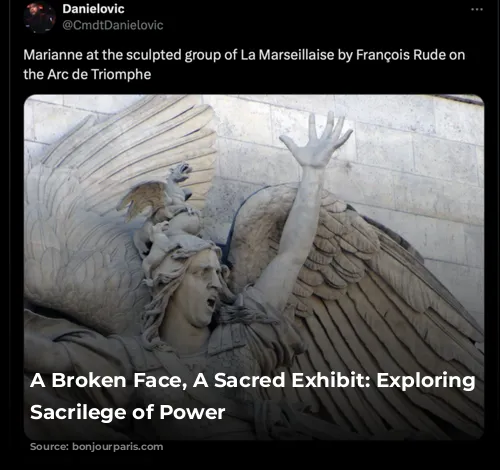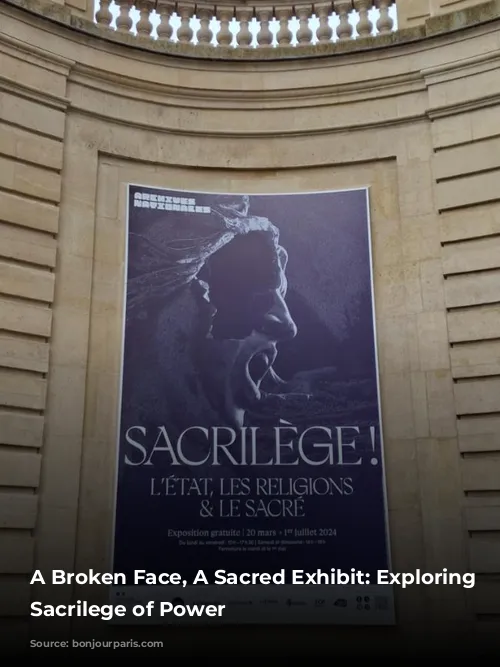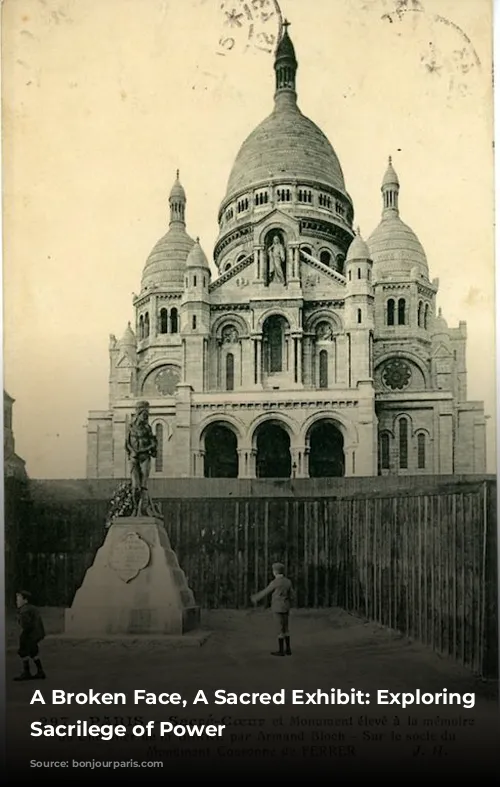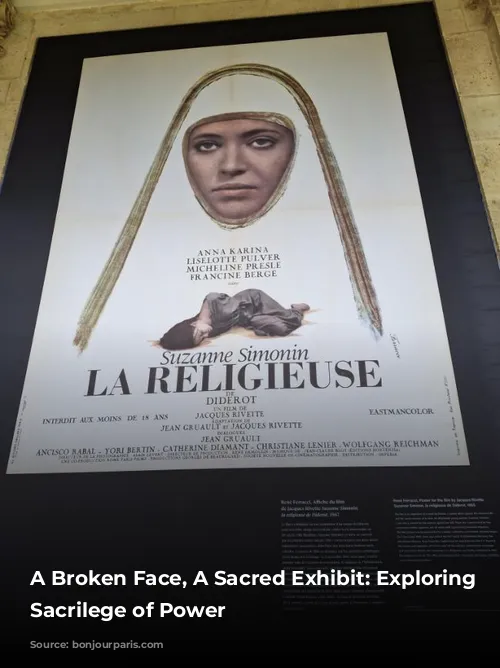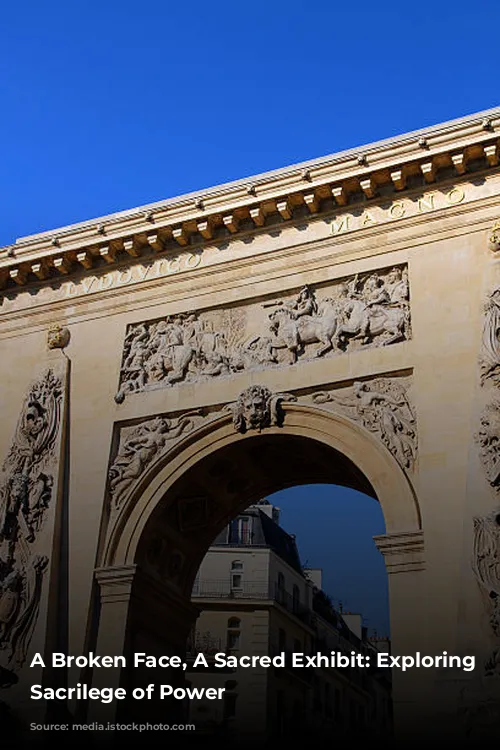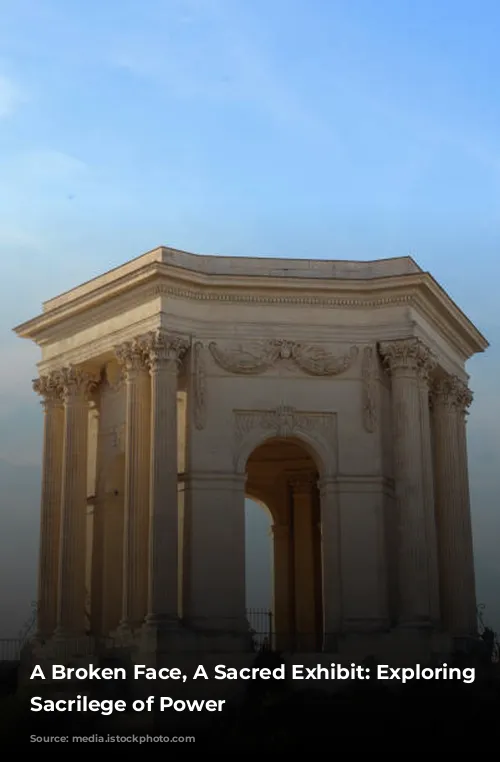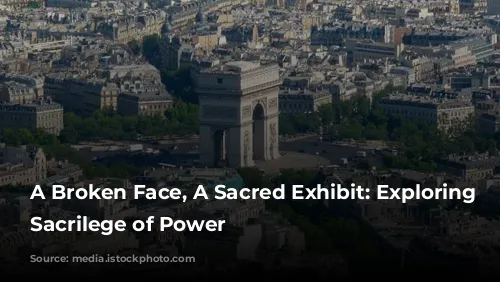On December 1st, 2018, a somber event unfolded at the Arc de Triomphe. A group of protesters, known as the “gilets jaunes,” defaced a statue symbolizing French unity: the “Marseillaise.” The iconic figure’s face bore a gaping wound, a stark visual of the unrest shaking the nation. While the state promised swift retribution for the act, it seemed to ironically silence the statue’s cry for solidarity. The protests subsided, but the memory of the damaged monument lingered.
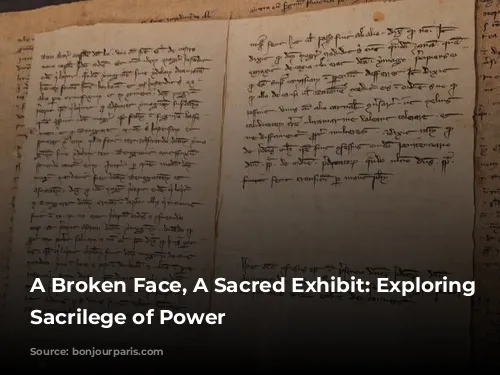
From Broken Face to Exhibit Star
Fast forward six years, and the Marseillaise’s fractured visage found a new stage. This summer, the statue stood as a centerpiece of the National Archives’ captivating exhibit, “Sacrilège: the State, Religions, and the Sacred.” The exhibit, brimming with evocative imagery, dives into a timeless theme: the delicate line between the sacred and the profane. It compels us to ponder the essence of sacrilege and its enduring presence in our world.
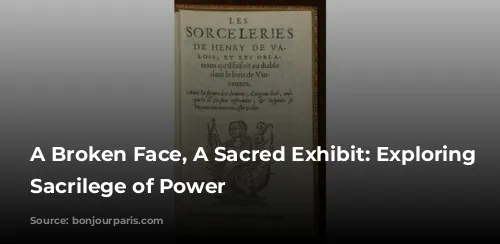
The Birth of Sacrilege: Medieval Unity and Its Perils
In antiquity, the notion of sacrilege was rarely invoked. But, during the Middle Ages, a new fervor for unity of belief propelled the concept to the forefront. This era saw the belief that homogeneity of faith was the cornerstone of a stable kingdom. Even the Knights Templar, protectors of the sacred, fell victim to accusations of heresy, a chilling reminder of the era’s intolerance. A 1307 document from the inquisition against the Knights Templar, showcased in the exhibit, serves as a stark testament to this persecution.
The medieval kings of France embraced this vision of unified faith with fervor. Pope Innocent III spearheaded a crusade against the Cathars in Southern France, seeking to eradicate this dissenting Catholic group. The goal was a utopian realm of absolute unity, a dream that soon spiraled out of control. In 1268, Pope Clement IV issued a papal bull, on display at the National Archives, urging Louis IX to ease the persecution.
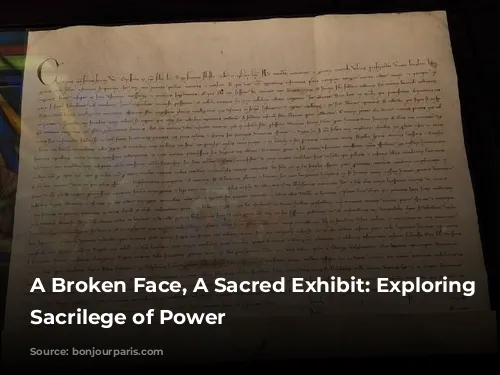
The State and the Sacred: Defining the Boundaries of Power
These early documents, showcased in the exhibit, shed light on the emergence of a centralized state and its insatiable hunger for control. As royal power rose, it erected a barrier around the sacred, prohibiting any transgression against its defined realm. “Royal power,” “the Catholic Church’s truths,” “the divinely ordained societal order,” all fell under the banner of the sacred, fiercely guarded against any hint of critical thought or questioning authority.
The exhibit highlights the rise of blasphemy as a key term separating the sacred from the profane. In the era of the Reformation, this label became a weapon of choice, wielded by both Catholic and Protestant powers to demonize their rivals. “Les Sorceleries de Henri de Valois” (The Sorceries of Henri of Valois), a little book on display, offers a striking example of how propaganda could be used to fuel hatred and justify violence.
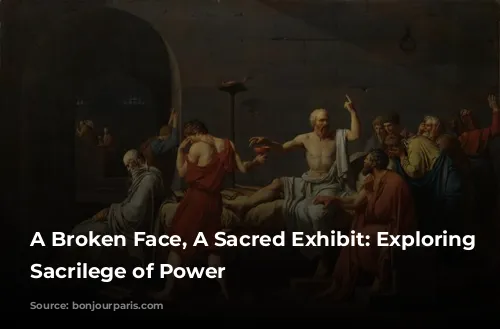
Blasphemy’s Enduring Legacy: From Chevalier de la Barre to the Modern Age
While blasphemy, in its traditional form, saw a decline in prosecution over the centuries, the exhibit reminds us that the concept didn’t vanish completely. Instead, it transformed. The state took on the role of the sacred, demanding absolute obedience and reverence. An 1814 declaration proclaimed the new king “inviolable and sacred,” a testament to this shift in power. Even a cartoonist in 1830 was sued for daring to depict King Louis-Philippe’s face as a pear.
The exhibit delves into the challenges of the 20th century, examining the tensions between free speech and the notion of the sacred. It prompts us to consider the boundaries of personal offense and whether creative projects should be free from condemnation for their satirical or truthful depictions of the sacred. The story of Diderot’s scandalous novel, “La Religieuse,” adapted into a film in 1965, serves as a reminder of the enduring battles surrounding artistic freedom and its clash with societal taboos. The exhibit’s giant poster of the film stands as a testament to these ongoing struggles.
